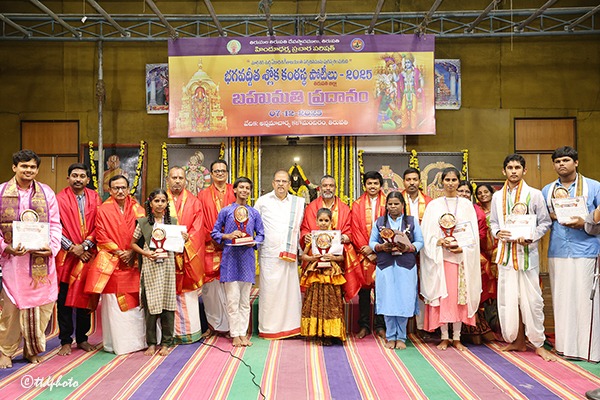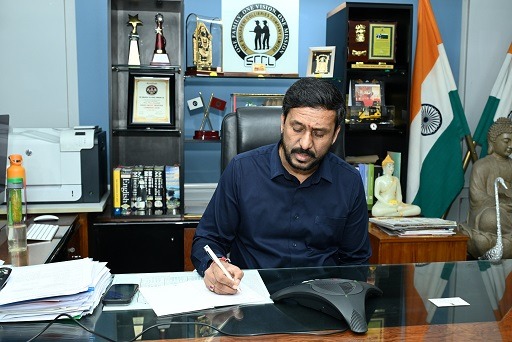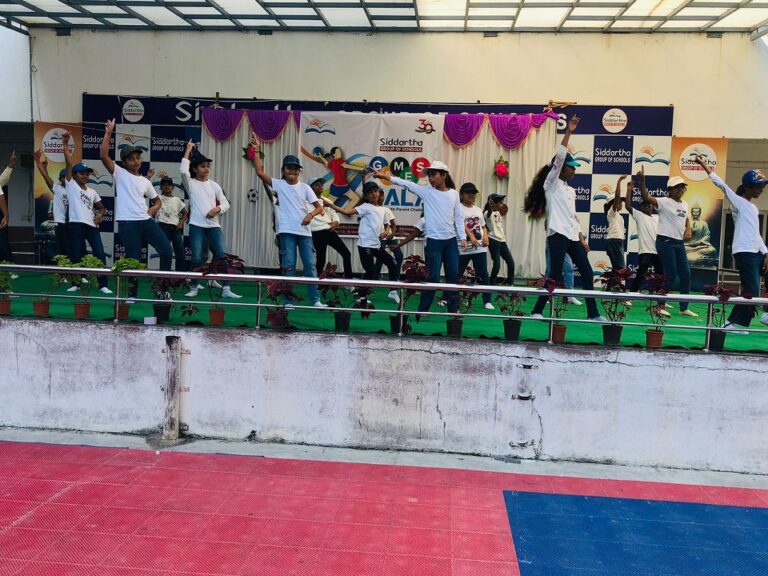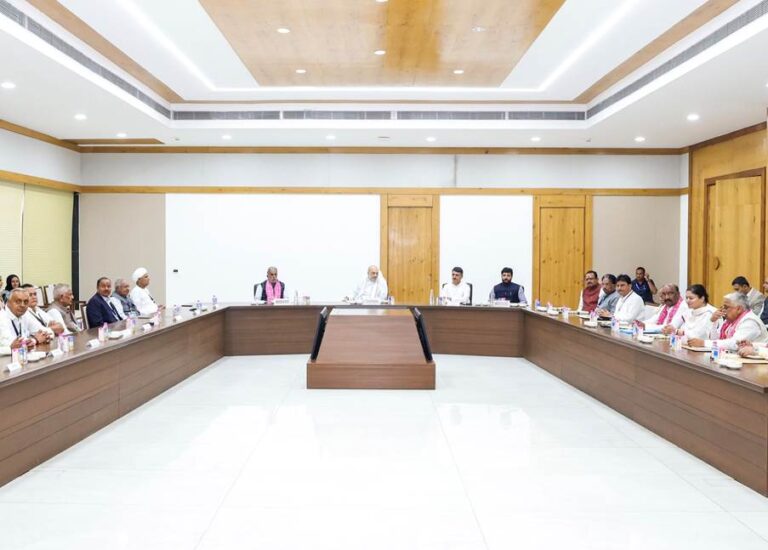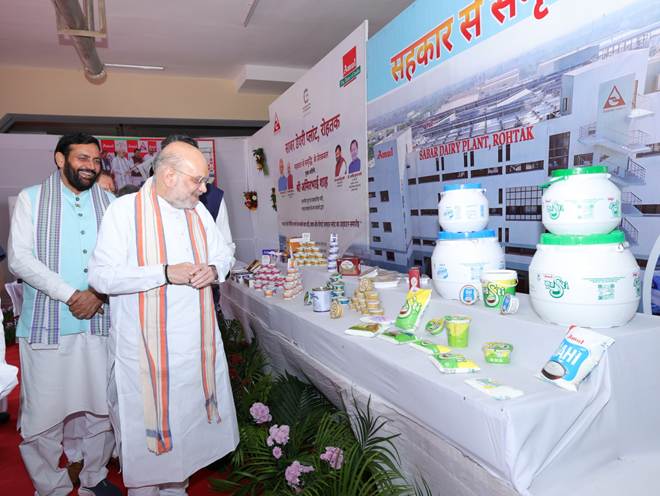

Under the leadership of Prime Minister Shri Narendra Modi, a strong foundation for cooperation is being laid, and by 2029, every panchayat in the country will have a cooperative society
Sabar Dairy has established the country’s largest plant for producing curd, milk, and sweets at a cost of ₹350 crore for the welfare of milk-producing farmers in Haryana
The Sabar Dairy Plant, producing 150 metric tons of curd, 10 metric tons of yogurt, 3 lakh litres of buttermilk, and 10,000 kg of sweets daily, will become a symbol of prosperity for dairy farmers
Under the leadership of Prime Minister Modi, the dairy sector in India has become the fastest-growing sector in the world, advancing at a rate of 70 per cent
Due to the policies of the Modi government, 8 crore farmers in the country have joined the dairy sector
Today, the country’s milk processing capacity is 66 million litres per day, which is targeted to reach 100 million litres per day by 2028-29
The Modi government is moving towards self-reliance in the dairy sector by accelerating dairy plant construction and R&D by three times
NEW DELHI, OCTOBER 03, 2025: Union Home Minister and Minister of Cooperation Shri Amit Shah inaugurated the Sabar Dairy Plant in Rohtak, Haryana, today. On this occasion, Chief Minister of Haryana Shri Nayab Singh Saini, Union Minister of State for Cooperation Shri Krishan Pal Gurjar, Union Minister Shri Rao Inderjit Singh, along with several other dignitaries, were present.
In his address, Union Home Minister and Minister of Cooperation Amit Shah said that Prime Minister Shri Narendra Modi has fulfilled the decades-old demand of the farmers of the country to establish a separate Ministry of Cooperation, and the entire nation is grateful to him for this. He said that in the past four years, the Ministry of Cooperation, along with all the state governments of the country, has worked to strengthen the foundation of cooperatives. Union Minister of Cooperation expressed confidence that by 2029, every panchayat in the country will have a cooperative society.
Shri Amit Shah said that today, through Sabar Dairy, the country’s largest plant for producing curd, buttermilk, and yogurt, built at a cost of about ₹350 crore, has been completed for the welfare of milk producers. He said that from Haryana itself, the entire demand for dairy products in the Delhi–National Capital Region (Delhi-NCR) will be fulfilled. Shri Shah further stated that Sabar Dairy, which began in Gujarat’s Sabarkantha district, has created vast opportunities for milk producers across 9 states. In Gujarat, Tribhuvan Bhai, Bhura Bhai, and Galba Bhai laid the foundation of dairies, and today, through cooperative dairies, 35 lakh women in Gujarat are carrying out annual business worth ₹85,000 crore.
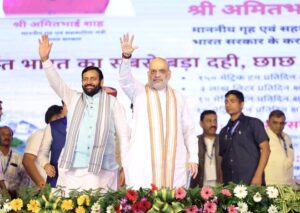
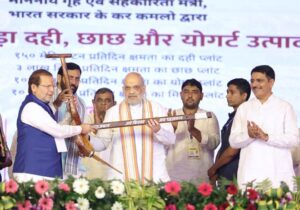
Union Minister of Cooperation said that at the Sabar Plant, production will include 150 metric tonnes of curd, 10 metric tonnes of yogurt, 3 lakh liters of buttermilk, and 10,000 kilograms of sweets per day, which will pave the way for farmers’ prosperity. He added that today Sabar Dairy is serving farmers in Rajasthan, Haryana, Maharashtra, Punjab, Uttar Pradesh, and Bihar. He further said that under Amul’s leadership, extensive scientific work has been carried out in Gujarat on modern breeding technologies such as embryo transfer and sex-determination. These technologies should also be made available to livestock farmers in Haryana. Along with this, there is a need to promote beekeeping and organic farming in the state. He also mentioned that several successful experiments on biogas have been carried out in Gujarat, and such initiatives should also be implemented in Haryana.
Shri Amit Shah said that under the leadership of Prime Minister Shri Narendra Modi, India’s dairy sector has grown by 70 per cent in the last 11 years. Under Prime Minister Modi’s leadership, India’s dairy sector has become the fastest-growing dairy sector in the world. He stated that in 2014–15, the number of milking animals in India was 86 million, which has now increased to 112 million. Similarly, milk production has risen from 146 million tonnes to 239 million tonnes. The production of milk from indigenous cow breeds has increased from 29 million tonnes to 50 million tonnes. Shri Shah said that today, about 8 crore farmers in India are connected with the dairy sector. He further added that farmers in our country have raised per capita milk availability in India from 124 grams to 471 grams. Union Minister of Cooperation said that in the last 11 years, many changes have taken place in India’s dairy sector, which have brought prosperity to our farmers.
Union Home Minister and Minister of Cooperation said that in terms of per capita milk availability, Haryana consistently ranks between first and third place every year. He added that due to the consistent policies during Prime Minister Modi’s tenure, today India stands proudly before the world as the largest milk producer. Shri Shah said that under White Revolution 2.0, more than 75,000 dairy societies will be established across the country in the coming days, and the government will also strengthen 46,000 dairy cooperative societies. He stated that our current milk processing capacity is 660 lakh litres per day, and our target is to increase this to 100 million litres by 2028–29. Once this goal is achieved, all the profits will directly benefit our farmer mothers and sisters engaged in milk production.
Mr Amit Shah said that recently, the Modi government has established three national cooperative societies for animal feed production, manure management, and the use of dead animal remains in the circular economy. He added that the Modi government has launched the National Gokul Mission, the National Artificial Insemination Program, the Animal Husbandry Infrastructure Development Fund, and the National Animal Disease Control Program. Shri Shah stated that in the coming days, India also aims to become self-reliant in the construction of dairy plants, and for this purpose, the Modi government is moving towards self-reliance in the dairy sector by accelerating dairy plant construction and related research and development by three times.

